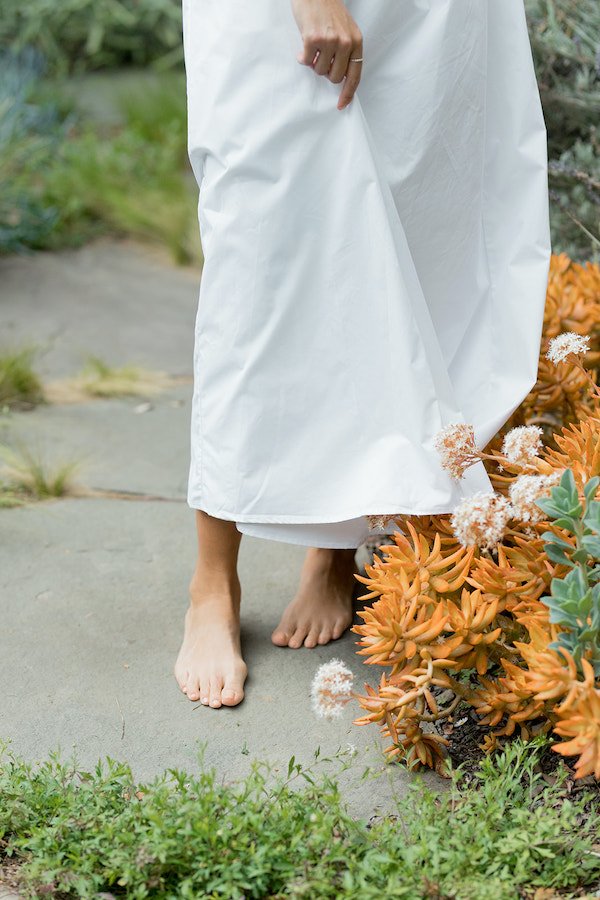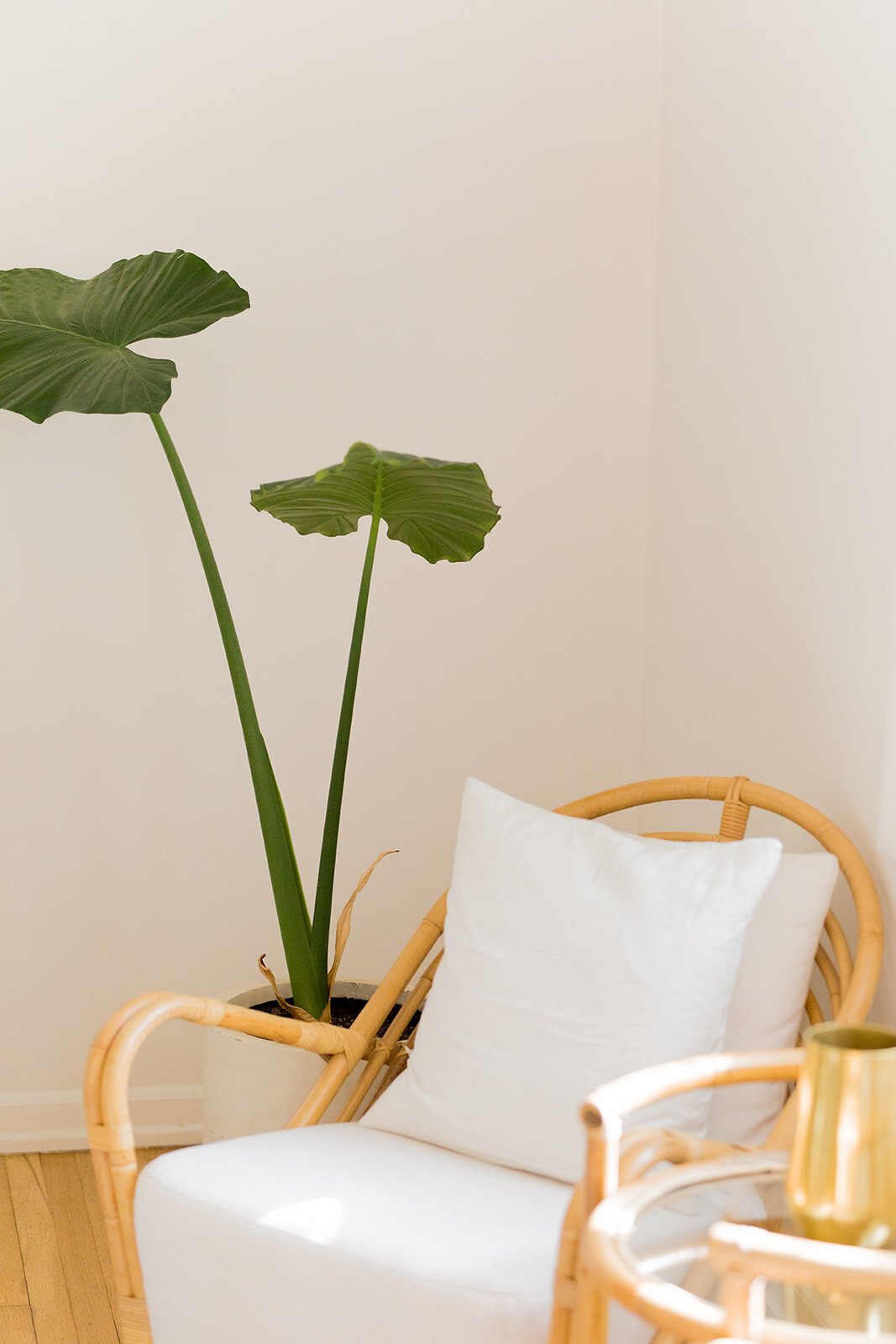
What is Slow Living?
Embracing A Slower, More Sustainable Lifestyle
The slow living movement began with the opening of a McDonald’s in the heart of Rome.
In 1986, the fast food chain opened a location at the Piazza di Spagna, at the foot of the Spanish Steps. At the time, it was the largest McDonald’s in the world, sparking protests from Italians and a lawsuit from Valentino—an American tribute was defiling the Roman monument. That McDonald’s is still there today.
In response, political activist Carlo Petrini founded the International Slow Food movement in 1989, centering local, traditionally prepared foods in direct dissonance to “fast food.”
Today, slow living encompasses many different facets—one is slow food, while others include slow fashion, slow travel, slow fitness, slow interiors, and slow news. And note, you don’t have to live in a cottage in the countryside with a garden and no wifi to live a slow lifestyle.
What is Slow Living?
Slow living is a lifestyle that emphasizes taking a slower, more mindful approach to all aspects of everyday life. It’s about identifying what you value most in your life and structuring your time accordingly.
“The central tenet of the Slow philosophy is taking the time to do things properly, and thereby enjoy them more,” says Carl Honoré in his 2004 book, In Praise of Slowness. Instead of going through our days as quickly as we can to be more “productive,” slowing down helps us enjoy living rather than cruising on autopilot.
Carl Honoré’s book helped explain the link between slow food and slow living, bringing the latter into the mainstream. The concept took off vigorously during the pandemic when a worldwide slowdown triggered a desire for many folks to step back and “reconnect with meaningful hobbies, nature, and ourselves,” says Slow Living LDN.
“Unlike common misconceptions, slow living doesn’t mean being lazy, sluggish, or uninspired.”
In a world where ads constantly bombard us, encourage us to get more done, and are besieged with the latest trends, slow living is, in fact, a bit radical. “It’s actually a profoundly revolutionary [idea] in a roadrunner culture where every moment [in] a day is a race against the clock,” Honoré told Martha Stewart. Honoré’s framing of slow living as radical hearkens to Audre Lorde’s 1988 explanation of self-care in A Burst of Light: “Caring for myself is not self-indulgence, it is self-preservation, and that is an act of political warfare.”
Unlike common misconceptions, slow living doesn’t mean being lazy, sluggish, or uninspired. It isn’t all about slowing down the pace of every task we do, but instead changing the tasks that we do, giving us “the headspace to prioritize what’s important and assign the right amount of time to each task or activity,” says Slow Living LDN.
Why is Slow Living Important?
A main principle of slow living is reclaiming our time—cutting out activities that don’t serve your interests, like maybe doom scrolling, Netflix binging, or learning to say no to certain commitments. This can actually make us feel like we have more time—more hours in the day to commit to what’s important to us, like hobbies, friends and family, or pleasure.
Slow living lets us invite more intentionality into our lives. Intentionality helps us find more meaning and pleasure in everyday activities, reminding us why we do what we do, rather than operating on cruise control and not enjoying the little things.
“Everything, from our health and diet to our relationships, families, communities, and schools, [is suffering],” Honoré told Martha Stewart, “and it’s also hurting our ability to think, link, innovate, create work, be productive, and be creative.”
Living slower also means living in better alignment with nature. Making decisions to benefit your health and wellbeing will benefit the planet’s health, too, through measures like eating locally grown food, rejecting fashion trends, and walking and biking whenever possible.
“Slow living lets us invite more intentionality into our lives.”
Another benefit? Curating a more mindful relationship with technology. Slow living doesn’t necessarily mean rejecting technology or other modern conveniences but rather ensures that technology is serving us instead of the other way around.
Finally, slow living means strengthening and deepening our relationships. With reduced stress and more time, we can make more commitments with those who matter the most to us (and maybe less with those who don’t).
It’s important to note who has access to slower living and who doesn’t—those with more wealth can afford to slow down at work or even leave completely, or can find time to meditate or cook from scratch or prioritize hobbies. Like most trends in our hyperconnected world, slow living has become an often inaccessible lifestyle, aestheticized on social media and adjacent to the now almost meaningless phrase “self-care.”
“So many BIPOC folks are living slowly either out of necessity or just as a part of their culture and they’re not really purchasing a lot,” Leah Thomas, founder of Intersectional Environmentalist, told i-D. “My grandma will sit on her porch for hours at a time.” Slow living isn’t about expensive t-shirts (sustainable as they may be) or biking to work—it’s about living mindfully in order to take care of yourself and the world around you.
How Can We Implement Slow Living in Our Lives?
Committing to a slow lifestyle is committing to imperfection. Living with intentionality means giving yourself permission to constantly change and evolve, depending on what works best for you. Here are some beginner tips on how to embrace the slow lifestyle.
-
Eat locally. Shop for groceries at farms and farmers’ markets whenever possible, or, better yet, start a garden at home. Cook foods you enjoy, not just foods in your typical rotation or foods that are quick.
-
Use social media mindfully. Social media can be an incredible tool for inspiration or connecting with others, but it’s also designed to be addictive. Use apps like Screen Time to control your usage, and only follow people and accounts who post content that makes you feel inspired. When you’re waiting for the kettle to boil, resist the urge to open your phone and just be with your thoughts instead.
-
Maintain relationships mindfully. Instead of only texting, invite a friend over for coffee or dinner, or set up a phone call with a relative.
-
Embrace slow fashion. Shop secondhand or from sustainable clothing companies whenever you can, but remember, the most sustainable option is wearing what you already own. Learn to patch your own clothing, and try to ignore trends when shopping so your wardrobe is timeless.
-
Practice saying “no.” This one is especially important at work—learn to say “no” to avoid over committing yourself and risking burnout.
-
Travel mindfully. Reducing our plane trips is critical to reducing our carbon footprint—and it can also give us better vacations. Explore anywhere you can get to by car or train, and you’ll find some hidden gems you would have missed otherwise. And, even when you’re traveling by plane, take your time traveling—instead of hitting four destinations in eight days, take a weeklong trip to one place only, really absorbing the area and reducing your travel time and footprint.
-
Work on hobbies you enjoy. Set aside time to do things for fun, rather than just productivity—you don’t have to be perfect at something to enjoy it!
-
Spend time with yourself. Find comfort in being alone with your thoughts, working on a grounded, peaceful mindset.
Remember, the point of all of this is that you won’t ever be perfect. The idea of a slow life is a life where you can reflect on how and why you do things. “This isn’t a race with a start and finish line,” says Brooke McAlary in her book Slow: Simple Living for a Frantic World. “This is slow, imperfect, intentional and evolving.”
Natalie Gale is a Boston-based freelance journalist. When she’s not writing about art, food, or sustainability, you can find her biking to the farmers’ market, baking, sewing, or planning her next Halloween costume. Say hi on Instagram!
RELATED READING
Featured image includes model Norrine Maupin wearing dress by Shaina Mote; jewelry by Apse





